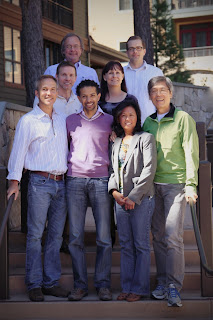The next in our "Best of the Month" series is from September 16, 2013
Two UC Davis Neurosurgeons Resign After Intentionally Infecting Intracranial Glioblastomas with Bowel Bacteria
 |
| Neurosurgeon J. Paul Muizelaar, MD |
Dr. J. Paul Muizelaar, 66, the former head of the neurosurgery department, and his colleague, Dr. Rudolph J. Schrot, violated the university's faculty code of conduct. All three patients consented to the procedures in 2010 and 2011. Two of the patients died within weeks of their surgeries, while the other survived more than a year after being infected.
Muizelaar and Schrot called their novel approach "probiotic intracranial therapy," or the introduction of live bowel bacteria, Enterobacter aerogenes, directly into their patients' brains or bone flaps. The doctors theorized that an infection might stimulate the patients' immune systems and prolong their lives. The first patient lived about 5 1/2 weeks. The second survived another year, an outcome that buoyed the doctors and seemed to bolster their theory, they said. The institutional trouble began in March 2011, when a newly diagnosed third patient developed sepsis, became unresponsive and died two weeks after being deliberately infected. The university's first internal investigation soon followed.
Muizelaar and Schrot did not complete a study on rats before they began treating the three human patients, despite an FDA directive in 2008 that "animal studies will be necessary prior to entering into the clinic with your proposed therapy," according to an email to Schrot from an FDA official. When asked by a compliance investigator why animal trials were not done first, Schrot allegedly responded that such testing would take "10 years … his entire career," one internal review states. The investigator found Schrot's "eagerness to proceed" to be concerning and his actions "reckless."
Muizelaar, one of the highest paid employees in the University of California system, stepped down effective June 27. He earned more than $907,000 last year, the 33rd-highest gross pay in the UC system. Schrot, 45, an associate professor who made about $512,000 last year, will leave his post at the end of August. Both doctors have sharply criticized the findings, characterizing the internal investigations as biased and incomplete. The surgeons maintain they were acting in the best interests of their desperately ill patients, whose prognoses for survival were poor. Both doctors opted not to appeal the university's findings because they determined it would be fruitless."I lost confidence, if you will, in the ability of the university administration to fairly handle it," Schrot said Friday in the office of his Sacramento attorney.
One colleague, Dr. David Asmuth, an infectious disease specialist who co-chaired an oversight committee for university research, called the surgeons' procedure "the worst case of human subjects research he had ever seen."
"I was simply thinking that I could help patients," Muizelaar said. "My whole medical practice is guided by actually only one principle, namely: What would I do for my mother, my son, myself?"






















